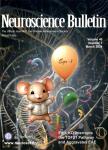Complement Factor H Displays Opposite Expression Patterns Under Two Situations of Methamphetamine Administration:Acute Exposure and Chronic Dependence
Complement Factor H Displays Opposite Expression Patterns Under Two Situations of Methamphetamine Administration:Acute Exposure and Chronic Dependence作者机构:National Key Research Laboratory of Natural and Biomimetic DrugsPeking UniversityBeijing 100191China Department of Molecular and Cellular PharmacologySchool of Pharmaceutical SciencesPeking UniversityBeijing 100191China National Institute on Drug DependencePeking UniversityBeijing 100191China Centre for Imaging and Systems BiologyMinzu University of ChinaBeijing 100081China College of Life and Environmental SciencesMinzu University of ChinaBeijing 100081China
出 版 物:《Neuroscience Bulletin》 (神经科学通报(英文版))
年 卷 期:2020年第36卷第12期
页 面:1558-1562页
核心收录:
学科分类:1002[医学-临床医学] 1001[医学-基础医学(可授医学、理学学位)] 100205[医学-精神病与精神卫生学] 10[医学]
基 金:the National Natural Science Foundation of China(81801364 and 81571354) the China Postdoctoral Science Foundation(2018M631277) the Huayi Technology Innovation Center for Research Resources(HTIC P01 RR2018001M)
主 题:prevention identifying burden
摘 要:Dear Editor,Methamphetamine(METH)is a highly addictive central nervous system stimulant that has severe physical and psychological side-effects,including loss of appetite,hyperactivity,dysphoria,and depression[1].Due to its illegal production,distribution,sale,and possession it has become a worldwide *** is directly toxic to dopaminergic and serotoninergic neurons,resulting in excitotoxicity,oxidative stress,and other processes[2].Research on biomolecules associated with these processes will be useful for identifying potential markers,exploring the mechanism of METH dependence,and even developing prevention and treatment strategies.



